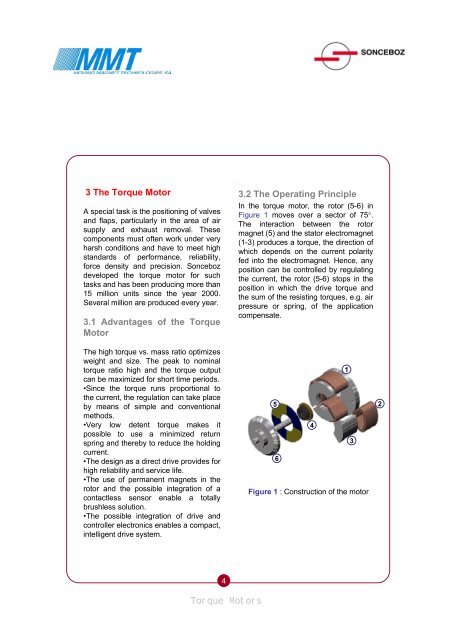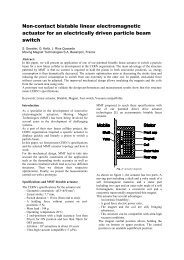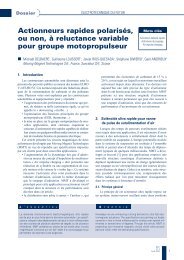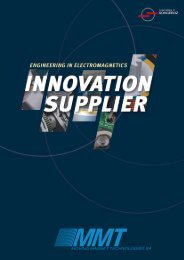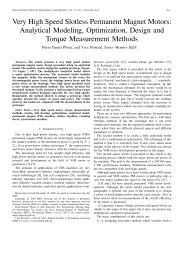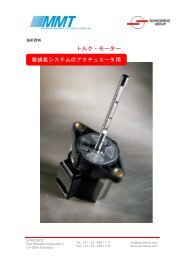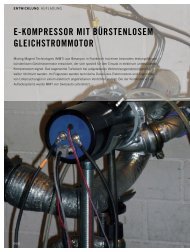JSAE 2009 - Moving Magnet Technologies
JSAE 2009 - Moving Magnet Technologies
JSAE 2009 - Moving Magnet Technologies
You also want an ePaper? Increase the reach of your titles
YUMPU automatically turns print PDFs into web optimized ePapers that Google loves.
3 The Torque Motor<br />
A special task is the positioning of valves<br />
and flaps, particularly in the area of air<br />
supply and exhaust removal. These<br />
components must often work under very<br />
harsh conditions and have to meet high<br />
standards of performance, reliability,<br />
force density and precision. Sonceboz<br />
developed the torque motor for such<br />
tasks and has been producing more than<br />
15 million units since the year 2000.<br />
Several million are produced every year.<br />
3.1 Advantages of the Torque<br />
Motor<br />
The high torque vs. mass ratio optimizes<br />
weight and size. The peak to nominal<br />
torque ratio high and the torque output<br />
can be maximized for short time periods.<br />
•Since the torque runs proportional to<br />
the current, the regulation can take place<br />
by means of simple and conventional<br />
methods.<br />
•Very low detent torque makes it<br />
possible to use a minimized return<br />
spring and thereby to reduce the holding<br />
current.<br />
•The design as a direct drive provides for<br />
high reliability and service life.<br />
•The use of permanent magnets in the<br />
rotor and the possible integration of a<br />
contactless sensor enable a totally<br />
brushless solution.<br />
•The possible integration of drive and<br />
controller electronics enables a compact,<br />
intelligent drive system.<br />
.<br />
3.2 The Operating Principle<br />
In the torque motor, the rotor (5-6) in<br />
Figure 1 moves over a sector of 75°.<br />
The interaction between the rotor<br />
magnet (5) and the stator electromagnet<br />
(1-3) produces a torque, the direction of<br />
which depends on the current polarity<br />
fed into the electromagnet. Hence, any<br />
position can be controlled by regulating<br />
the current, the rotor (5-6) stops in the<br />
position in which the drive torque and<br />
the sum of the resisting torques, e.g. air<br />
pressure or spring, of the application<br />
compensate.<br />
5<br />
6<br />
Figure 1 : Construction of the motor<br />
4<br />
1<br />
3<br />
2<br />
4<br />
Torque Motors


